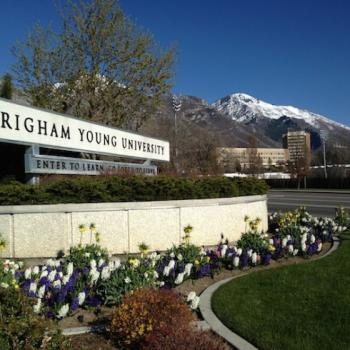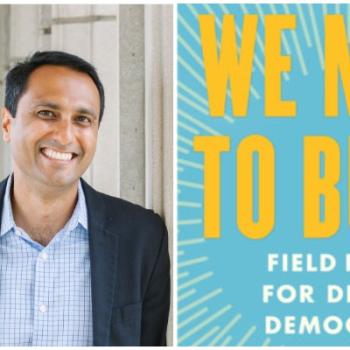I am very pleased to announce that a book that I have worked on for a quite a while is finally out: The Faiths of Others: A History of Interreligious Dialogue (Yale University Press, 2021). Here is the cover description:
The first intellectual history of interreligious dialogue, a relatively new and significant dimension of human religiosity.
In recent decades, organizations committed to interreligious or interfaith dialogue have proliferated, both in the Western and non-Western worlds. Why? How so? And what exactly is interreligious dialogue? These are the touchstone questions of this book, the first major history of interreligious dialogue in the modern age. Thomas Albert Howard narrates and analyzes several key turning points in the history of interfaith dialogue before examining, in the conclusion, the contemporary landscape.
While many have theorized about and practiced interreligious dialogue, few have attended carefully to its past, connecting its emergence and spread with broader developments in modern history. Interreligious dialogue—grasped in light of careful, critical attention to its past—holds promise for helping people of diverse faith backgrounds to foster cooperation and knowledge of one another while contributing insight into contemporary, global religious pluralism.
***
And here is an essay derived from the book that recently appeared in the magazine Commonweal:
Pope Francis’s 2020 encyclical, Fratelli tutti, is remarkable for highlighting St. Francis’s irenic meeting with Fatimid Egypt’s Sultan Malik al-Kamil in 1219 amid the depredations of the Fifth Crusade—an encounter richly depicted in a fresco by Giotto in the Upper Basilica in Assisi. The meeting is a distant harbinger of what today we would call interfaith or interreligious dialogue, the significance of which was emphasized by the Pope’s 2019 meeting in Abu Dhabi with Grand Imam Ahmad al-Tayyeb and his more recent meeting in Iraq with the Shia leader Grand Ayatollah Ali al-Sistani.
In St. Francis’s time, such meetings were rare; today they are more common. Some scholars even speak of a “global interfaith movement,” which gained steam in the second half of the twentieth century but really accelerated in response to 9/11. A simple web search will dredge up thousands of interfaith “centers,” “institutes,” “councils,” “projects,” “initiatives,” “forums,” “groups,” and “alliances.” The sheer number of these bodies, in the United States and abroad, poses a challenge to the scholar attempting to chart the movement’s history.
But most trace their origins to Chicago’s 1893 Parliament of the World’s Religions, hosted in conjunction with that year’s World’s Fair. For an unprecedented sixteen days, the parliament brought together religious leaders from around the world for a series of lectures and conversations. Similar events soon followed, both in the United States and Europe, usually spearheaded by scholars, liberal Protestants, Reform Jews, Unitarians, and Theosophists. At first the Catholic Church looked on with skepticism. Pope Leo XIII even fulminated against “promiscuous religious gatherings,” and several prelates who participated in the Chicago event were later disciplined. But of course the Church pivoted at the Second Vatican Council (1962–65), heartily endorsing interreligious dialogue in its Declaration on the Relation of the Church to Non-Christian Religions, Nostra aetate. Begun as a post-Holocaust statement on Jewish-Catholic relations, Nostra aetate was broadened to include other faiths as well. Pope John Paul II, who had been a young theologian at the council, made interfaith engagement a central feature of his historic papacy, while Jewish scholars such as Martin Buber and Abraham Joshua Heschel also championed it.
Since the late twentieth century, and especially after 9/11, interfaith organizations have mushroomed, and numerous religious bodies are now on board. A sample list might include Religions for Peace (founded in 1970), the Inter Faith Network for the United Kingdom (1987), the North American Interfaith Network (1988), the Global Ethic Foundation (1995), the Rumi Forum (1999), the United Religions Initiative (2000), the Malaysian Interfaith Network (2003), and the Doha International Centre for Interfaith Dialogue (2007), among many others. In 2011, the United Nations began recognizing World Interfaith Harmony Week every February. The American Academy of Religion recognized a new Interreligious and Interfaith Studies unit in 2014. Major philanthropic foundations have gotten into the act, funding a wide variety of interfaith initiatives. Countless books and articles have appeared on the subject.
Continue reading the essay here:













